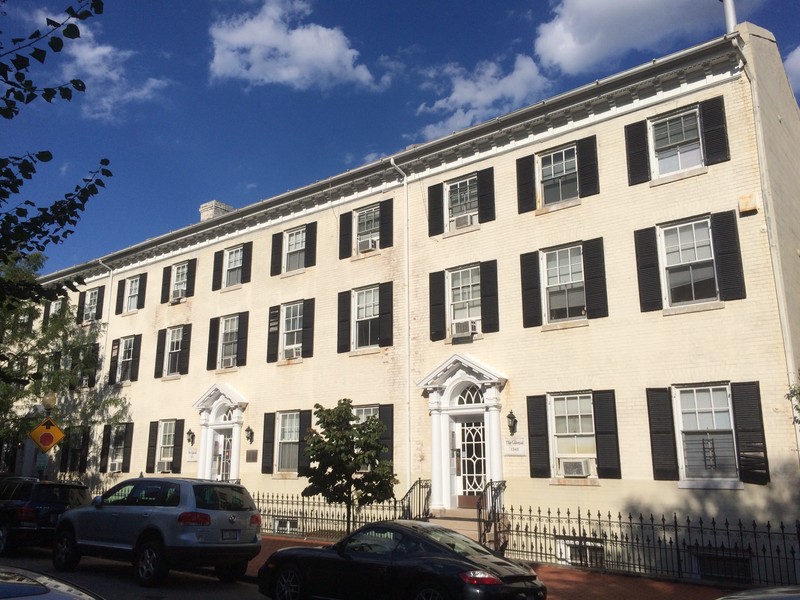The Colonial and Female Seminary
Introduction
Text-to-speech Audio
Images
The Colonial building and marker by J. Makali Bruton, HMDB.org (reproduced under Fair Use)

Backstory and Context
Text-to-speech Audio
In 1826, Lydia Scudder English (1802-1866) founded the Georgetown Female Seminary against the wishes of her father, who refused to support her in this endeavor. Starting with three pupils, the school quickly grew and its student community grew to include the daughters of prominent Washington citizens and politicians. The school educated 1800 pupils over the course of its existence.
English was a secessionist and owned slaves who worked in the school. Accounts of the school have recorded only one name of an enslaved person who worked there, a woman called "Old Aunt" Abby.
The seminary held a festival on the first day each May, in which Miss English crowned three kings and three queens. The festival also included a band and speeches, and the school invited the town. Narratives of the school's history note the mischief of young men hanging around the school, drinking at a pump nearby and using a system of baskets on ropes to pass gifts to the female students. The school nevertheless had a reputation for its strictness and discipline.
The building itself is three stories, and had 19 bedrooms, a parlor, a library, and several porches, and featured hot running water. In 1861, the Union army confiscated the building for a military hospital for officers after the First Battle of Bull Run. Hating to see the Union flag flying over what had once been her school, English moved out of sight of the building, around the corner. According to the National Park Service, Doctor Mary Walker, the first woman to receive the Medal of Honor, may have served at the hospital.
After the war, alumnae of the school, Mary E. Bibb and S. A. Lipscomb, opened the Georgetown Female Seminary here in 1866. Lipscomb ran the school after 1871, and later moved it into Washington, renaming it Waverley Seminary. This building eventually became apartments, and underwent restoration in 1953.
Sources
Bruton, J. Makali. The Colonial, Historical Marker Database. June 12th 2019. Accessed August 5th 2020. https://www.hmdb.org/m.asp?m=97727.
Coffin, John P. Washington. Historical sketches of the capital city of our country. [place of publication not identified]: [publisher not identified], 1887. Internet Archive. Accessed August 6th 2020. https://archive.org/details/washingtonhisto00coffgoog
Mackall, Sally Somervell. Early Days of Washington. [place of publication not identified]: Neale Company, 1899. Google Books. Accessed August 6th 2020. https://www.google.com/books/edition/_/NisSAAAAYAAJ?hl=en&gbpv=0
National Park Service. Georgetown Civil War Walking Tour, Chesapeake & Ohio Canal National Historic Park.. April 15th 2015. Accessed August 6th 2020. https://www.google.com/books/edition/_/NisSAAAAYAAJ?hl=en&gbpv=0.
https://www.hmdb.org/PhotoFullSize.asp?PhotoID=362493
